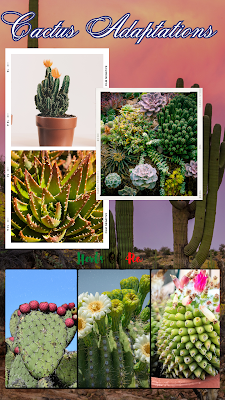Tamarind (Tamarindo)
The tamarind, botanical name Tamarindus indica, also called the tamarindo, is indigenous to tropical Africa. Back in the 14th century Marco Polo first introduced the fruit to Europe, later the Spanish and Portuguese explorers brought the tamarind to the Americas.
A short palm like tree, with spreading branches shaped like an umbrella, with graceful long leaves. This tree lives for many years and there are trees that are still producing after 200 years. This tropical tree can almost live in any condition except the cold, it can survive drought, flourish in poor soil or even in windy conditions. The blossoms are yellow, turning into long, flat pods that are usually slightly curved. They look like a large dry, brown, tough pea pod. The pods are usually 3 to 8 inches in length, and can contain up to 12 seeds, and a mature tree is capable of producing up to 350 pounds of fruit a year.
It is one of the flavorings in cola drinks, and Worcestershire sauce. Tamarind can be bought in pulp form (a dark brown paste), from supermarkets and local markets here in Panama. I have seen it in transparent plastic bags. It has a sweet/sharp/sour taste that goes well with chili. When a recipe calls for tamarind, if you don't have any, a lemon or lime can be used as a substitute. Tamarind contains iron, vitamin C, calcium, tartaric acid (giving tamarind its sharp taste), polysaccharide, and oxalic acid. Only the flesh surrounding the seeds is generally used. When you make the pulp yourself, it generally tastes better. To make fresh tamarind pulp - break open the brittle shell and peel it back from the seeds and surrounding flesh. Remove the long fibers and cut the pulp away from the seeds. Soak the pulp in very hot water and cover for several hours or overnight. Then using a sieve, press out all the juice from the flesh, use this strained paste in recipes. Another way is to put the shelled tamarind pods with the seeds into a saucepan, add enough water to cover them. Cover with a lid and simmer gently until the flesh begins to fall off the seeds, about 30 minutes. Stir frequently to speed up the process. Add more water if the mixture becomes too thick or dry. Strain through a sieve, pushing hard with the back of a spoon to extract as much paste as possible, it can then be frozen for up to a year or kept in the refrigerator for weeks. We have long used it in Britain, as it is an ingredient that is sometimes needed for making various curries.
Traditional medicinal uses - it is known as a tonic, carmative, laxative, digestive, antiseptic, for alcoholic intoxication, vomiting, dysentery and is cooling. A poultice made from the fresh leaves, were applied to swollen joints, sprains, boils, sore eyes and scabies. The pulp of the fruit is also a liver stimulant and cures digestive disorders.
The tamarind fruit has been used for centuries in West Africa as an infusion of the whole pod, added to a dye when coloring goat hides. The fruit pulp was used as a fixative with turmeric or annatto in dyeing fabrics yellow. The leaves are given to cattle and goats as animal fodder, and silkworms in India and in West Africa also feed on these leaves. The silk made by the silk-worms that feed on these leaves, is considered superior for embroidery. Tamarind leaves are added to boiling water with the buri palm leaves, which are then used for weaving hats, the tamarind helps to lighten the buri palm leaves. In Colombia, an ointment is made with tamarind paste, plus other ingredients to help domestic animals get rid of parasites. Young stems and slender roots of the tamarind tree are turned into beautiful walking-sticks. The bark contains a lot of tannin, so is ideal for tanning hide, the bark is also burned to make an ink. Bark from young trees yield a low-quality fiber used for twine and string. The tamarind tree is a home for the lac insect, Kerria lacca, it deposits a resin on the twigs, and is collected and sold as stick-lac for the production of lacquers and varnish. I am guessing here, that this is where the word lac-quer came from.
Modern medical needs - the US imports about 200,000 lbs (90,000 kg) of the shelled fruits annually for the drug trade, mainly from Mexico. Europe's supply comes from Calcutta, and Egypt. Tamarind preparations are universally recognized for treating fever, constipation, and anxiety, the extracts of tamarind are found in various preparations.
There is much superstition surrounding this tree, because very few plants survive under this tree. It is thought to be harmful to sleep or to tie a horse under the tamarind tree. In tropical South America, the pulp is used with sugar and water to prepare a cooling, refreshing drink.
Cooling Tamarind Drink -
Take about 12 tamarind pods
1 quart hot water
I quart cold water
Local honey to taste (only if needed or stevia)
First you need to remove the brittle shells, and rinse the shelled tamarinds with water. Place them in a pot, covering them with 1 quart (approx 2 pints) of boiling water and allow the pods to soak overnight or for several hours. Separate fluid, seeds and flesh, keep the paste for cooking. To the fluid add the other quart of water, honey to taste (optional), ice cubes and some mint leaves. To vary this drink you could add chopped fresh ginger to soak with the tamarind, or add chopped fresh mint leaves to soak with the tamarind.
Sonia Jones ND
Naturopath, nutritional therapist and author of three published books
http://www.nutritionwithsonia.com
http://www.arthritisalternativetreatment.com
Article Source: http://EzineArticles.com/?expert=Sonia_Jones


Comments